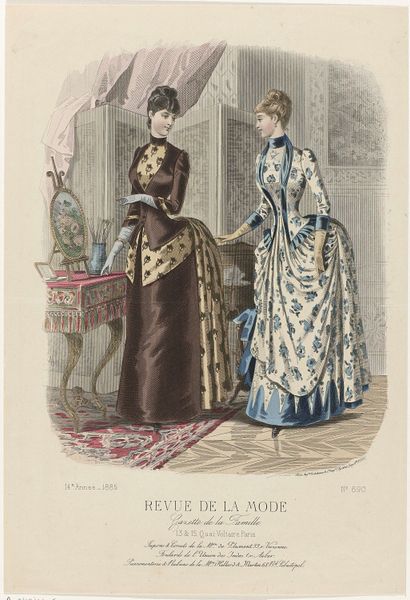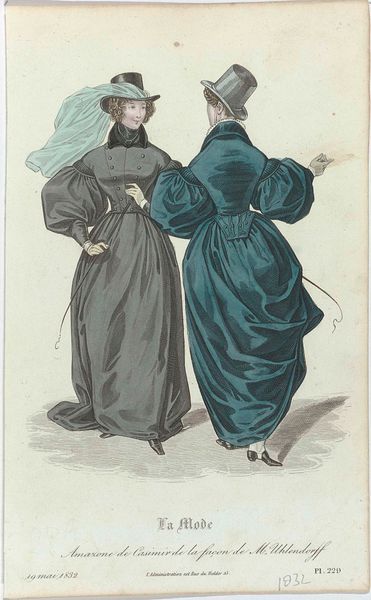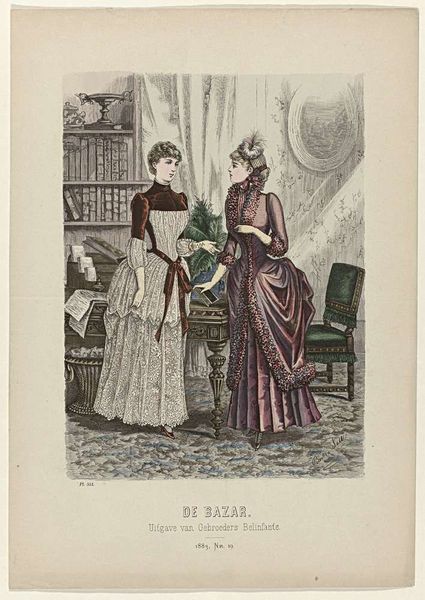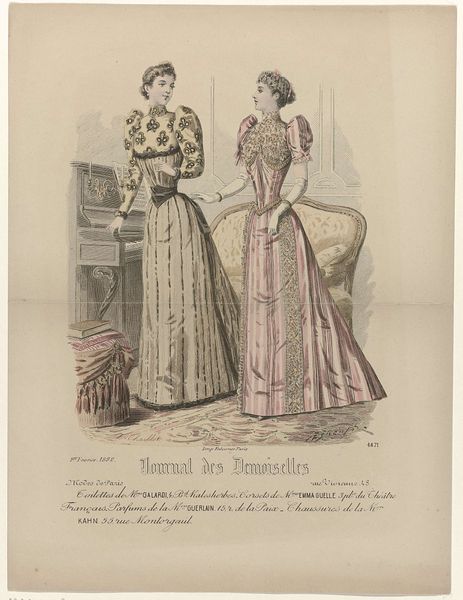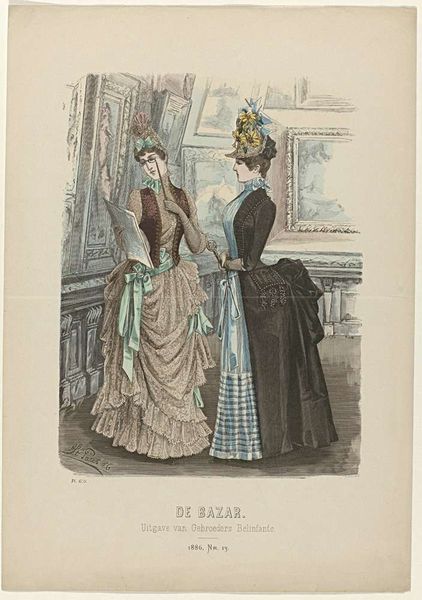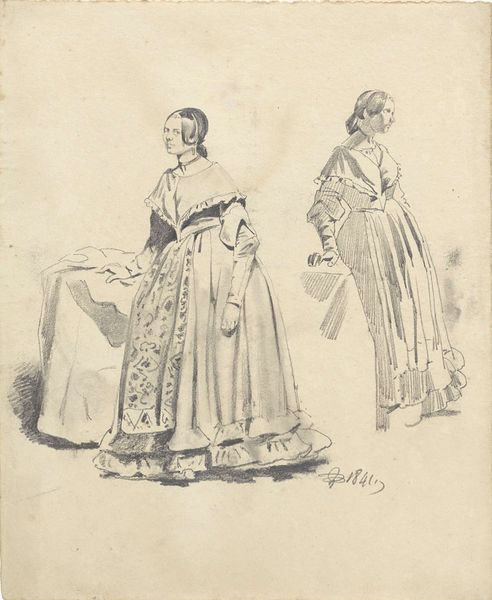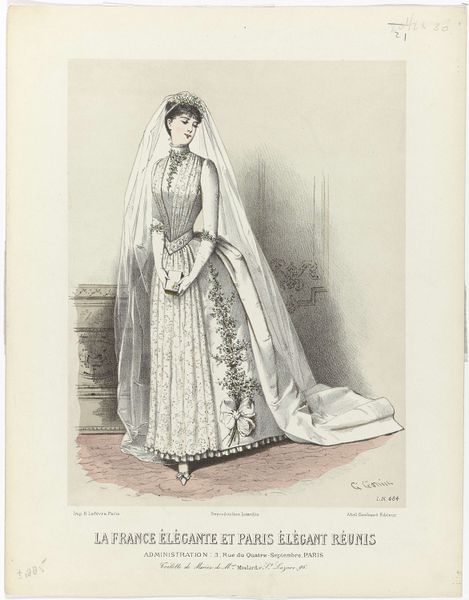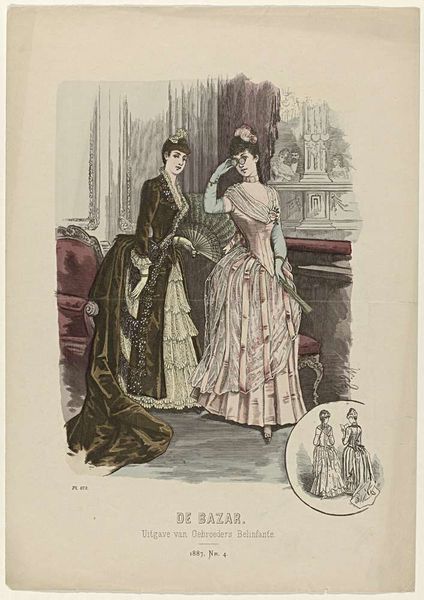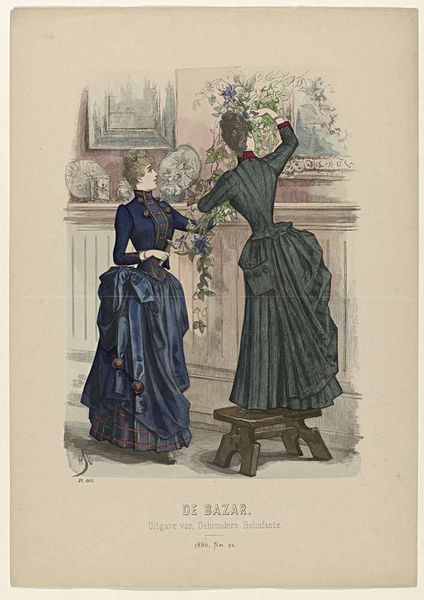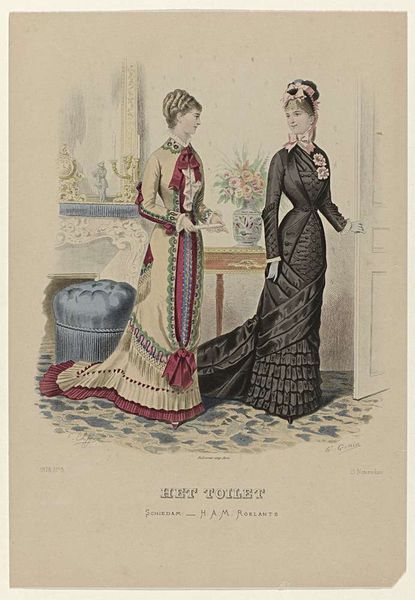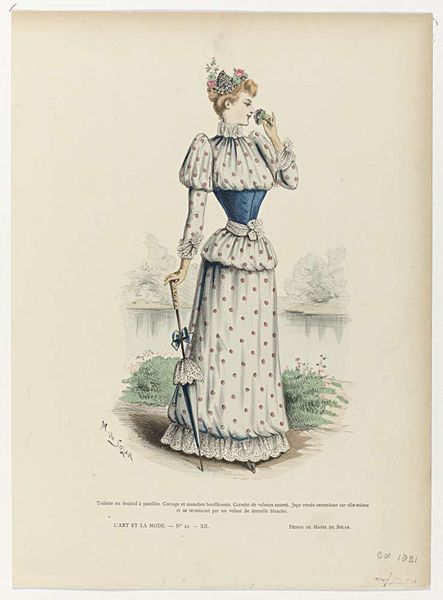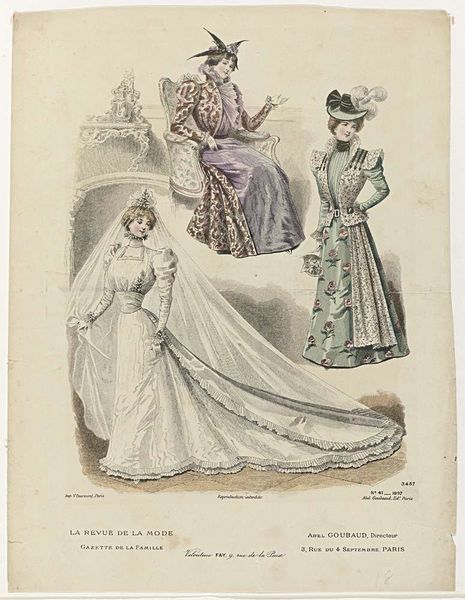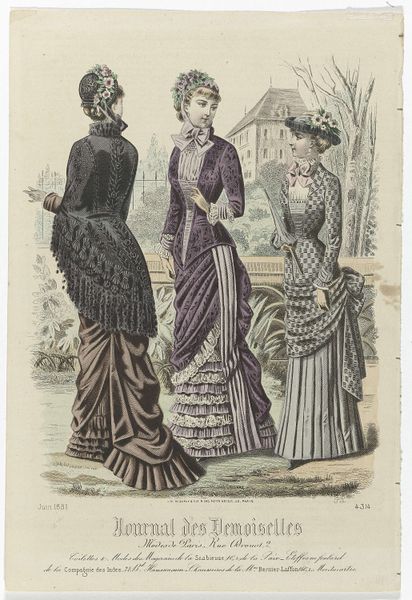
drawing, pencil
#
portrait
#
drawing
#
light pencil work
#
pencil sketch
#
caricature
#
pencil drawing
#
pencil
#
sketchbook drawing
#
pencil work
#
genre-painting
#
academic-art
Dimensions: height 409 mm, width 288 mm
Copyright: Rijks Museum: Open Domain
Curator: This is titled “Twee dames wandelend, 1888, No. 719” which roughly translates to "Two ladies walking" from 1888, and it's rendered with pencil. What’s your initial take? Editor: Austere. There's a rigidity to the lines that mirrors, I suspect, the social constraints placed on these women. And, look at the sheer amount of material used to create their clothing, it speaks volumes about conspicuous consumption. Curator: Right. Consider the era; clothing production, even at the high end, still relied heavily on manual labor. So, what can this drawing, likely reproduced for mass consumption, tell us about the garment industry at that time and the societal roles of women both as laborers and consumers? Editor: Precisely. The very act of depicting these women walking—presumably in leisure—reinforces class divisions. Were these images aspirational, shaping desires? How did publications and their reproduction of images reinforce this labor disparity? The scale and style point to possibly being part of a serialized magazine insert; a tool for spreading fashion and social standing. Curator: Interesting, it does suggest something designed for widespread circulation, aiming for broad appeal within certain societal ranks. But look closer at the material handling; the paper stock itself and how the artist captured such detail. Notice the distinct textural qualities created simply by varied pencil pressure and hatching techniques. Editor: Good point. The lines of the drawing emphasize form while the sharp tailoring denotes status. I wonder who the market for the image was? We see this and consider their consumption habits, but who had access? What other kinds of visual imagery did they consume and did this further dictate societal behaviors or were they pushing boundaries? Curator: And how would they use it? Would they use the clothing of the ladies in the work to communicate the ladies values, class, social standing. This provides context not just of clothing consumption, but image consumption and values that transcend the image. Editor: Indeed. The very creation and dissemination of these kinds of images reveal a lot about 19th-century culture. Curator: I'll now look at this work differently thinking of its original role in creating a desire in ladies for materials or consumption. Thanks.
Comments
No comments
Be the first to comment and join the conversation on the ultimate creative platform.
